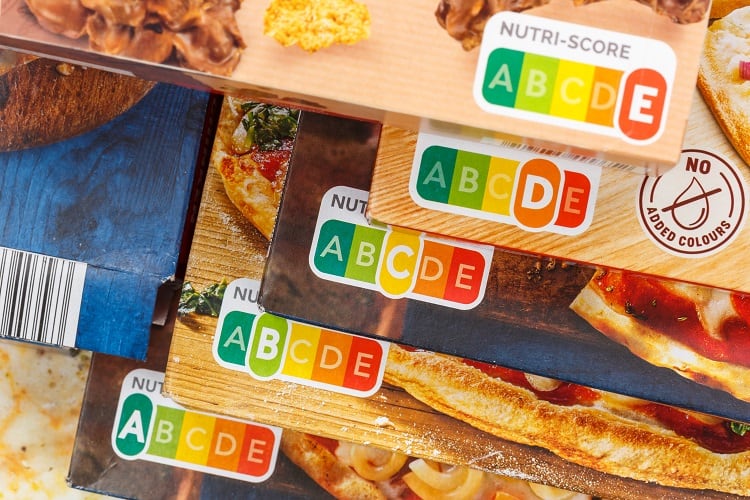The algorithm behind voluntary front-of-pack (FOP) labelling scheme Nutri-Score regularly sparks debate.
For some, including members of the Scientific Committee of the Nutri-Score (ScC), the label performs ‘well’. Food majors Nestlé and Danone are amongst its supporters, and France, Belgium, Germany, and Luxembourg have selected it as their national voluntary label schemes.
For others, including proponents of Italy’s NutrInform Battery scheme and members of Spain’s meat industry, Nutri-Score is discriminatory and unworthy of consideration for the EU-wide mandatory roll out, expected to be announced by the European Commission this year.
Whether the Nutri-Score algorithm – which ranks food from -15 for the ‘healthiest’ products to +40 for those that are ‘less healthy’ – is the most effective at helping consumers make healthier choices or not, new research out of France suggests it is having a positive impact on the nutritional quality of products on-shelf.
Some recipes up to five times healthier
In a report published this week by Union Fédérale des Consommateurs (UFC-Que Choisir), the consumer organisation observed that nutritional quality improved ‘considerably’ between 2015 and 2022, but only on shelves where Nutri-Score label is widely displayed.
In three categories in particular where the Nutri-Score label is often present – across cereal bars, special breads and rusks, and breakfast cereals – recipes are up to five times ‘healthier’ since 2015.
Nutri-Score is displayed across 43% of cereal bars, 61% of special breads and rusks, and 97% of breakfast cereals.
“In just seven years, the proportion of favourable Nutri-Score ‘A’, ‘B’ and ‘C’ for cereal bars has doubled (from 25% to 49%),” noted UFC-Que Choisir. The share of Nutri-Score ‘A’ and ‘B’ has multiplied nearly five-fold for breakfast cereals (from 8% to 38%), and increased from 40% to 62% for specialty breads and rusks.
Using Nestlé as an example, the food major’s cereal bars are now all Nutri-Score ‘C’ or ‘B’, according to the consumer organisation, citing notable reductions in fat, salt or sugar levels.
Since 2015, retailer Intermarché’s Chabrior chocolate muesli product has moved up to a ‘B’ rating, while la Boulangère tortillas have achieved a Nutri-Score ‘A’.
But other categories lagging…
Conversely, where Nutri-Score is not widely displayed, nutritional improvements are lagging, according to UFC-Que Choisir: “Without the Nutri-Score display, junk food thrives.”
The consumer organisation studied four more food categories where the FOP label is rarely carried by food makers: just 17% of biscuits and cakes carry Nutri-Score; 17% of bars and chocolate snacks; 10% of condiment sauces; and less than 1% of ice creams and sorbets.
“These categories have not experienced major nutritional improvements since 2015,” according to UFC-Que Choisir. More than half of ice cream and sorbet products (52%) achieve a Nutri-Score ‘E’ or ‘D’, as does three-quarters (75%) of the condiment sauces category.
Nine out of 10 products in the bars & chocolate snacks category and biscuits & cakes category achieve a Nutri-Score ‘E’ or ‘D’.
Further, products carrying a Nutri-Score ‘E’ make up just 1% of all national food brands, which UFC-Que Choisir suggests means most ‘junk food’ brands are opting not to carry the FOP label.
For the consumer organisation, an advocate for the mandatory adoption of Nutri-Score across the EU, the analysis highlights the ‘major’ limitations Nutri-Score’s voluntary nature in France.




